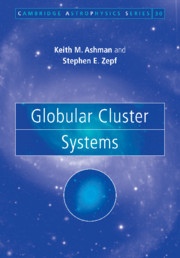Book contents
- Frontmatter
- Contents
- Preface
- 1 Introduction
- 2 Properties of globular clusters
- 3 The Galactic globular cluster system
- 4 Globular cluster systems in nearby galaxies
- 5 Properties of extragalactic globular cluster systems
- 6 Globular clusters and galaxy formation
- 7 The formation of globular clusters
- 8 Future prospects
- Appendix
- References
- Subject index
- Object index
5 - Properties of extragalactic globular cluster systems
Published online by Cambridge University Press: 21 September 2009
- Frontmatter
- Contents
- Preface
- 1 Introduction
- 2 Properties of globular clusters
- 3 The Galactic globular cluster system
- 4 Globular cluster systems in nearby galaxies
- 5 Properties of extragalactic globular cluster systems
- 6 Globular clusters and galaxy formation
- 7 The formation of globular clusters
- 8 Future prospects
- Appendix
- References
- Subject index
- Object index
Summary
Understanding the formation and evolution of galaxies is one of the primary goals of extragalactic astronomy and observational cosmology. The galaxies of the Local Group provide a logical starting point for this effort, and the properties of their globular cluster systems (GCSs) have proved to be a valuable tool in this area, as described in Chapters 3 and 4. In order to gain a broader understanding of galaxy formation, it is necessary to extend these studies to galaxies outside the Local Group. Such studies allow an examination of correlations between galaxies and their globular cluster systems with large sample sizes over a wide range of galaxy properties and environments. Of particular importance are giant elliptical galaxies, which are not present in the Local Group and which, by virtue of their old stellar populations and large masses, are a focal point for tests of galaxy formation models.
Beyond the Local Group, little information can be gleaned about the detailed properties of individual globular clusters, but their integrated properties can be observed to roughly 100 Mpc. In contrast, it is a great technical challenge to resolve stars in galaxies at distances greater than a few Mpc (or several times the size of the Local Group). Thus globular clusters provide discrete dynamical and chemical tracers of galaxies at distances far beyond those where individual stars are observable. The great age of many globular cluster systems is also important, since it implies that these objects are direct probes of the physical conditions at the epoch(s) of galaxy formation. Consequently, globular clusters provide one of the few ways to obtain individual snapshots of the formation history of galaxies.
- Type
- Chapter
- Information
- Globular Cluster Systems , pp. 73 - 108Publisher: Cambridge University PressPrint publication year: 1998



